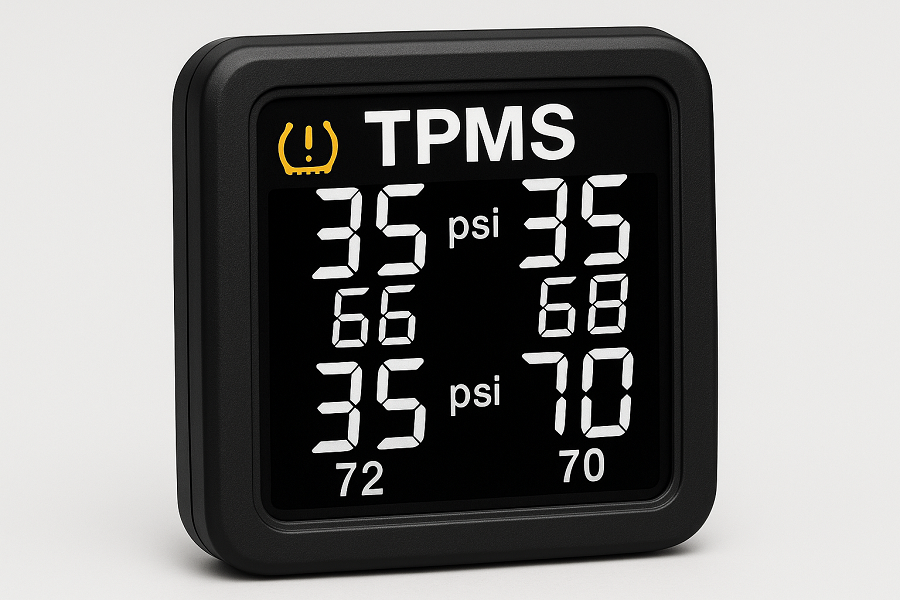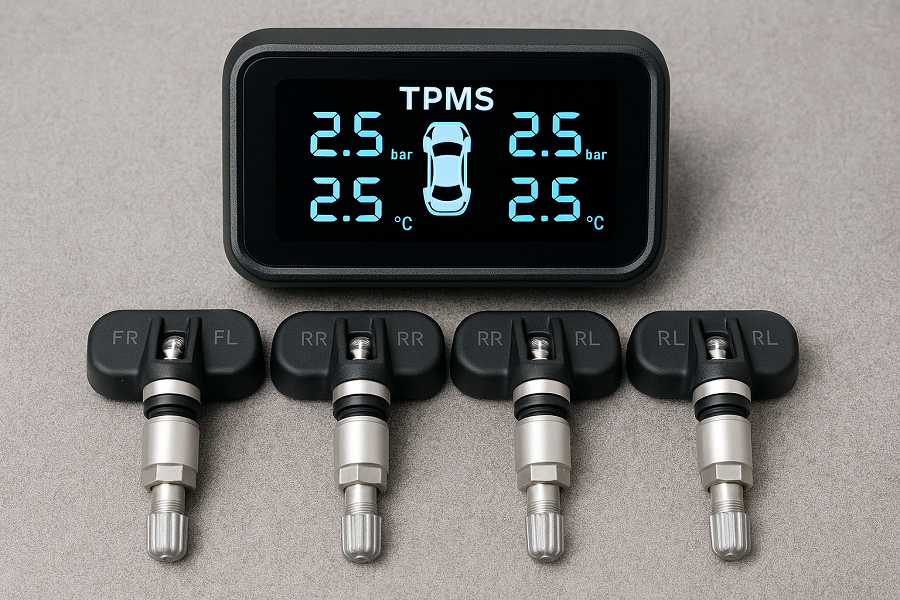Table of Contents
Table of Contents
Introduction: Why TPMS Matters for Your Drive
Ever glance at your dashboard and notice a blinking tire pressure warning light? That’s your car’s Tire Pressure Monitoring System (TPMS) trying to tell you something necessary. Tire Pressure Monitoring System is like a trusty co-pilot, holding an eye on your tire pressure to confirm a safe, smooth, and efficient ride. Correctly inflated tires aren’t just about comfort; they’re crucial for your safety, fuel economy, and even the environment. Since 2007, Check Tire Pressure Monitoring System has been compulsory in all new passenger automobiles in the U.S., and it’s common in many other countries too. So, let’s break down what TPMS light is, how it works, and why it’s a game-changer for every driver.
What Is TPMS?
In simple words, a Tire Pressure Monitoring System is a built-in component in your car that monitors the air pressure in your tires and warns you when it’s too low (or sometimes too high). Think of it as a protector for your tires, helping you bypass flats, blowouts, or uneven wear.
There are two main types of Tire Pressure Monitoring System:
- Direct TPMS: Uses physical detectors inside each tire to calculate air pressure and temperature. These sensor tyre transmit real-time data to your car’s computer, which shows it on the dashboard. It’s precise but can be pricier to maintain since sensors require batteries.
- Indirect TPMS: Doesn’t use sensors inside the tires. Instead, it depends on your car’s anti-lock brake system (ABS) to detect differences in wheel rotation speed, which can indicate low tire pressure. It’s less costly but not as accurate as direct TPMS.
Both types aim to keep you informed about your tire health, but direct Tire Pressure Monitoring System is more common in modern vehicles due to its accuracy.
How Does TPMS Work?
Tire Pressure Monitoring System is all about keeping tabs on your tire pressure and letting you know when something’s off. Here’s how it works in a nutshell:
- Direct TPMS: Small sensors (usually connected to the tire’s valve stem or inside the wheel) calculate the pressure and temperature of each tire. These detectors communicate wirelessly with your car’s computer. Imagine the pressure decreases below a safe level (typically 25% below the recommended PSI). In that case, the Tire Pressure Monitoring System activates a warning light on your dashboard, often a horseshoe-shaped icon with an exclamation mark.
- Indirect TPMS: This system monitors the speed of each wheel using the ABS sensors. If a tire is underinflated, it has less circumference and spins rapidly than the others. The system notices this difference and lights up the tire pressure warning light.
When that warning light glows, it’s your cue to check your tires. Some advanced Tire Pressure Monitoring System even show the exact pressure for each tire on your dashboard or infotainment screen, making it easier to pinpoint the problem.

Benefits of TPMS
Why should you care about Tire Pressure Monitoring System? Because it’s more than just a fancy device, it can save you money, keep you safe, and even help the planet. Here’s how:
- Improved Safety: Underinflated tires are a main reason for blowouts and accidents. Tire Pressure Monitoring System warns you before low pressure becomes a danger, decreasing the risk of losing control on the road.
- Better Fuel Efficiency:Low tire pressure forces your engine to work harder, burning more fuel. Properly inflated tires, thanks to TPMS, can enhance your gas mileage by up to 3%, according to the U.S. Department of Energy.
- Reduced Tire Wear: Uneven or low tire pressure wears out your tires faster, meaning you’ll need to replace them sooner. TPMS helps boost tire life, saving you cash in the long run.
- Environmental Benefits: Efficient tires mean lower fuel consumption, which translates to fewer CO2 emissions. By keeping your tires in check, Tire Pressure Monitoring System contributes to a greener planet.
With Tpms toyota, you’re not just driving smarter—you’re driving safer and more sustainably.
Signs Your TPMS Isn’t Working Properly
Like any car system, TPMS Honda isn’t foolproof. If it’s acting up, you’ll want to notice the issue early. Here are some signs your TPMS might need attention:
- Warning Light Stays On: If the tire pressure warning light is still on, even after you’ve checked and corrected your tire pressure, your TPMS detectors might be malfunctioning.
- Inaccurate Readings: If your dashboard displays extremely wrong tire pressures (like 10 PSI when you know it’s closer to 35), a sensor could be faulty, or its battery might be dying.
- Frequent False Alarms: Cold weather can cause tire pressure to fall temporarily, triggering the warning light. But if it occurs constantly without reason, your Tire Pressure Monitoring System may require a professional checkup.
If you notice any of these issues, don’t ignore them—your TPMS Android is trying to keep you safe, so make sure it’s in top shape.
Maintenance & Troubleshooting Tips
Keeping your Tire Pressure Monitoring System happy doesn’t take much effort, but a little care goes a long way. Here’s how to maintain it:
- Check Tire Pressure Regularly: Use a reliable tire pressure gauge to verify your tire pressure monthly, especially before long trips. Compare it to the recommended PSI (usually found on a sticker inside your driver’s door or in your car manual).
- Know Your Sensor’s Battery Life: Direct TPMS sensor rely on batteries that last about 5–10 years. If your car is older, the sensors might need replacing. A mechanic can check this for you.
- Don’t Ignore the Warning Light: If the tire pressure warning light comes on, check your tires as soon as possible. If the pressure looks fine but the light persists, visit a mechanic to diagnose potential sensor issues.
- Reset the System if Needed: After inflating your tires, some TPMS systems require a manual reset. Your car manual will explain how—often it’s just a button press or a sequence via the dashboard.
Pro tip: Cold weather can lower tire pressure naturally, so check more often in winter. If you’re unsure about anything, a trusted mechanic can inspect your Tire Pressure Monitoring System for Car and tires for peace of mind.
Conclusion: Keep Your Tires—and Your Drive—Safe with TPMS
Your car’s Tire Pressure Monitoring System is like a quiet guardian, watching over your tires to confirm they’re prepared for the road. By warning you of low tire pressure, it helps you bypass accidents, save on fuel, boost tire life, and even lower your environmental footprint. Ignoring that small caution light could lead to giant problems, so stay proactive. Check your tire pressure regularly, keep an eye on your Tire Pressure Monitoring System, and don’t hesitate to consult a skilled professional if something seems off.
